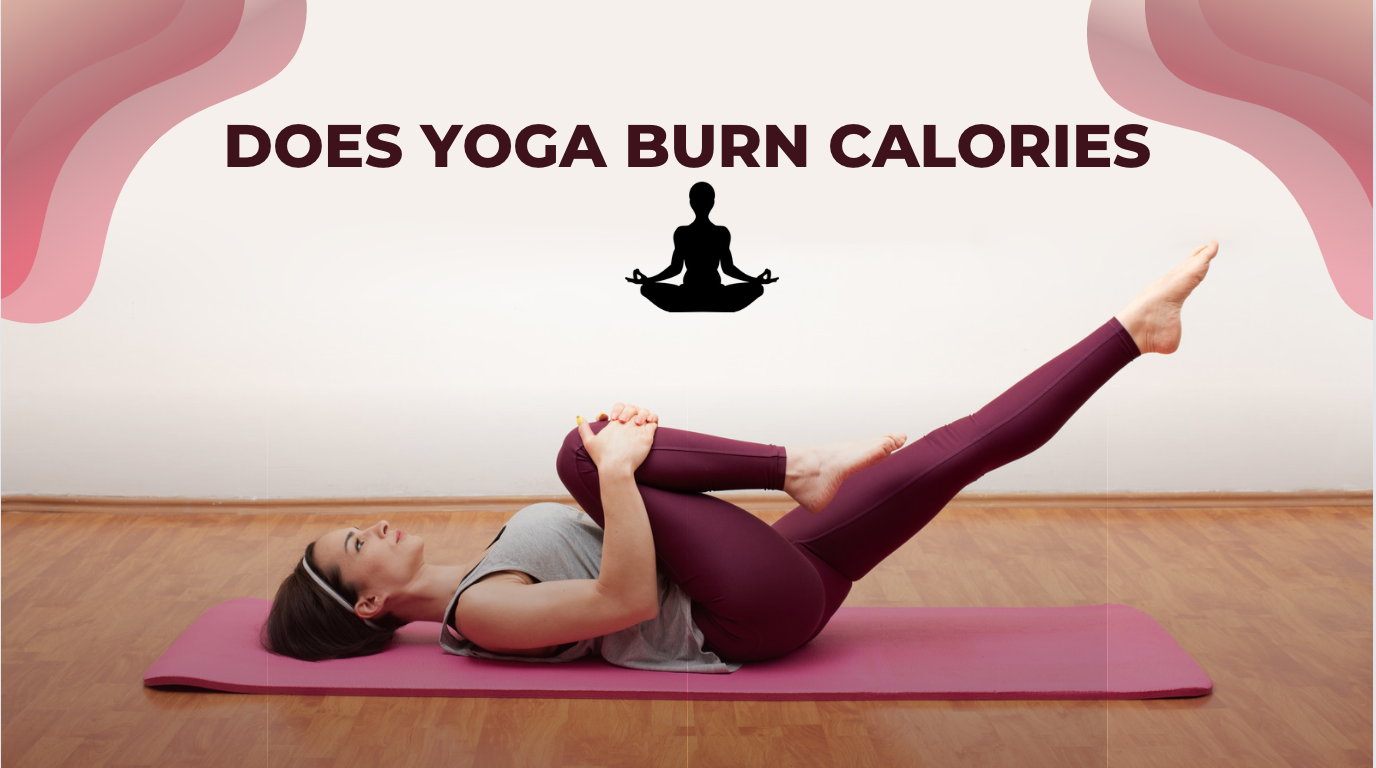Does Yoga Burn Calories? Find Out Here!
Yoga, with its tranquil ambiance and graceful poses, has long been revered for its ability to calm the mind and improve flexibility. But in recent years, as fitness enthusiasts have sought new ways to shed pounds and sculpt their bodies, a burning question has emerged:
Does yoga burn calories? While traditionally viewed as a gentle form of exercise, this ancient practice is now being scrutinized for its weight loss potential. In this article, we delve into the science behind yoga and explore whether it truly has the power to torch those unwanted calories. So grab your mat, find your center, and join us on this enlightening journey to discover if yoga can truly be an effective calorie-burning workout.
Does Yoga Really Burn Calories?

Yoga, with its gentle and calming movements, may not immediately come to mind when thinking about calories burned. However, it is worth noting that the practice can indeed contribute to weight loss and calorie burning. The intensity and duration of a yoga session play a crucial role in determining the number of calories burned.
It’s important to understand that yoga is an excellent way to build lean muscle mass which ultimately boosts metabolism. Unlike high-intensity workouts such as running or weightlifting, where the focus is on burning calories during the activity itself, yoga has a unique ability to increase our Basal Metabolic Rate (BMR) for an extended period after each session. This means our bodies continue burning calories long after we’ve rolled up our mats and moved on with our day.
Additionally, certain types of yoga classes tend to be more physically demanding than others. Vinyasa flow or power yoga, for example, involves continuous sequences of poses linked together by fluid movements. These dynamic practices can result in increased heart rate and sweating, allowing you to burn more calories than a slower-paced restorative class.
Types of Yoga With Higher Calorie Burn
Yoga is often thought of as a practice for the mind, body, and soul, offering benefits like flexibility, mental clarity, and stress relief. However, some types of yoga can also be quite effective for burning calories. Here are some yoga styles that tend to have a higher calorie burn, keeping in mind that the actual calorie burn can vary depending on a variety of factors including your weight, age, and overall fitness level.
Ashtanga Yoga: This is a rigorous style of yoga that follows a specific sequence of postures and is similar to vinyasa yoga, but faster-paced. A session can burn up to 300-350 calories per hour.
Vinyasa Yoga: Known for its fluid, movement-intensive practices, Vinyasa yoga burns more calories than more traditional forms, perhaps around 200-300 per hour.
Power Yoga: A derivative of Ashtanga Yoga, this form is a high-energy practice that can burn between 300-400 calories per hour. It’s more focused on building muscle and is generally fast-paced.
Hot Yoga / Bikram Yoga: Practiced in a room heated to 105°F with a humidity of 40%, this style can help you sweat a lot and burn between 300-450 calories per hour. However, it’s crucial to stay hydrated and listen to your body to avoid overheating.
Rocket Yoga: This is a style of yoga that is a reinterpretation of Ashtanga Yoga, aimed to make the poses more accessible but still challenging. It also aims for a higher calorie burn, with some estimates around 300-350 per hour.
Jivamukti Yoga: This style of yoga can be quite intense, incorporating chanting and spiritual teachings, and can burn up to 300 calories per hour.
Anusara Yoga: While perhaps not as intense as some of the other forms, it is still more rigorous than some traditional styles and can burn around 200-300 calories per hour.
Turbo Fire Yoga: This is not a traditional form of yoga but a hybrid workout that combines yoga with more intense cardio activities, and it can burn up to 500 calories per hour.
Factors that Affect Calorie Burn in Yoga
The number of calories burned during a yoga session can vary widely depending on several factors. Here are six key variables that can affect how many calories you burn:
Intensity:
The level of effort you put into your poses and transitions can greatly affect your calorie burn. More vigorous styles of yoga like Ashtanga, Vinyasa, or Power Yoga generally burn more calories than more relaxed styles such as Hatha or Restorative Yoga. The harder you work, the more calories you’re likely to burn.
Duration:
The length of time you spend practicing yoga will also influence calorie burn. A longer session will generally result in more calories burned, although this also depends on the intensity and type of poses you are doing.
Individual Metabolism:
Your basal metabolic rate (BMR), which is the rate at which you burn calories at rest, plays a role in determining your overall calorie burn. Factors like age, sex, muscle mass, and other individual characteristics can affect your BMR, and thus the rate at which you burn calories during exercise, including yoga.
Body Weight:
Generally speaking, people who weigh more will burn more calories during exercise due to the additional effort required to move their bodies. However, this is just a general guideline and can vary depending on other factors such as muscle mass and metabolic rate.
Technique:
Your form and the depth of your poses can also impact how many calories you burn. Holding a deep pose that engages multiple muscle groups will generally burn more calories than a shallower pose. Similarly, using proper techniques can make the exercise more effective and increase calorie burn.
Environmental Factors:
Things like room temperature can also play a role. For instance, hot yoga styles like Bikram or hot Vinyasa can result in a higher calorie burn due to the added challenge of performing poses in a heated environment, which can also increase your heart rate.
Final Thoughts
In conclusion, yoga can indeed burn calories, but it may not be as effective as other forms of exercise for weight loss. While certain types of yoga, such as power or Vinyasa flow, can increase heart rate and promote calorie burning, the overall calorie expenditure during a typical yoga session is relatively low compared to high-intensity cardio workouts.
However, yoga offers numerous benefits beyond just burning calories, including improved flexibility, strength, balance, and mental well-being. Therefore, if weight loss is your primary goal, incorporating other forms of exercise alongside yoga may yield more significant results. Regardless of your fitness goals, practicing yoga regularly can contribute to an overall healthier lifestyle and should be considered as part of a well-rounded fitness routine.
FAQs
Can yoga alone be enough for weight loss?
While yoga can aid in weight loss, it is most effective when combined with a balanced diet and regular physical activity.
Are there specific poses that are better for calorie burning?
Certain challenging poses like Plank, Chaturanga Dandasana (Four-Limbed Staff Pose), or Crow Pose require more strength and engagement, thus potentially leading to increased calorie expenditure.







